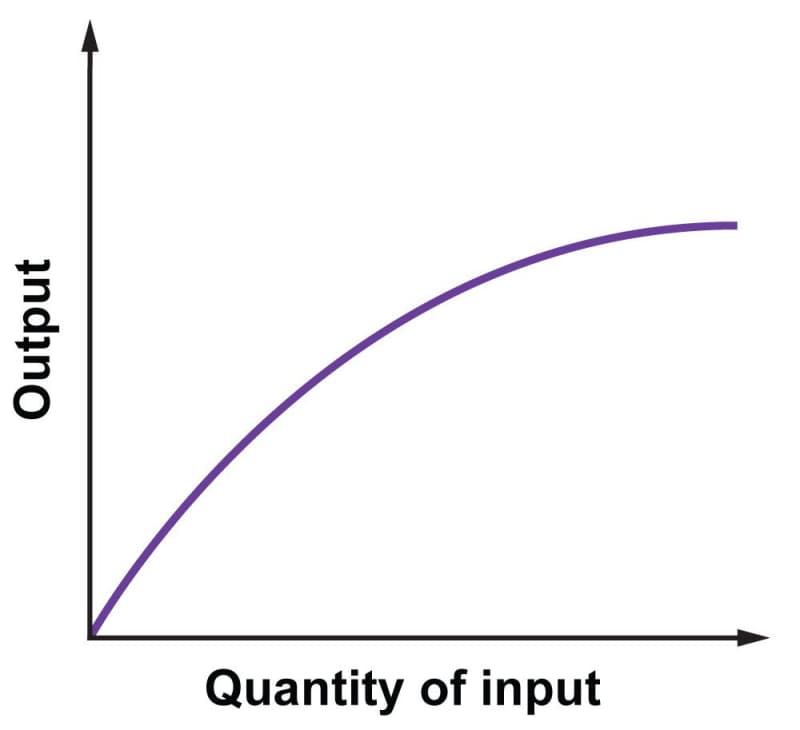Increasing production inputs is not the only way to increase productivity. Another way is with technology, the fruit of research and development. In this context, technology refers not to physical devices but to knowledge that can be used to improve manufacturing techniques, to make factory layouts more efficient, to better manage inventories, and so on. Such technological advances make it possible to get more production out of the same inputs. Technology is different from physical capital in that you don’t pay by the unit. Once you have the know-how to perform the same task more efficiently, all of that know-how is available at all production output levels. What technology really does is make your land, labor, and capital more productive.
The difference between production inputs and technology can be understood by revisiting the production function first seen in the Labor chapter. Picture the function, this time, in very generalized form, with input quantity (land, labor, or capital—it doesn’t matter) on the horizontal axis and production output on the vertical axis.

As before, increasing the input quantity leads to more output. And as before, the curve levels off to indicate that as inputs increase, the marginal product of the inputs declines.
Now suppose that a technological advance occurs. Because this advance makes the inputs more productive at all output levels, the resulting increase in productivity shouldn’t be thought of as rightward movement along the curve. Rather, the entire curve shifts upward:

That is what it means for technology to make inputs more productive at all output levels.













